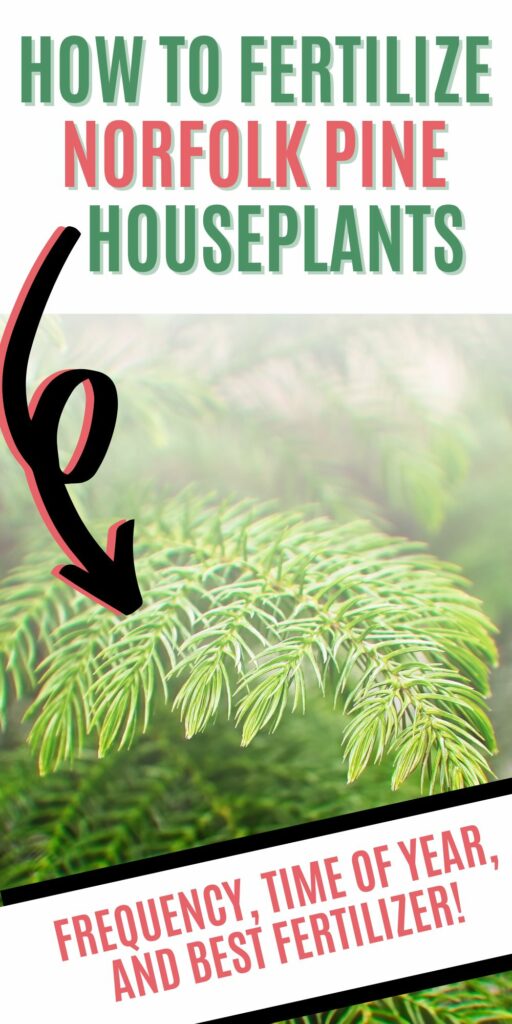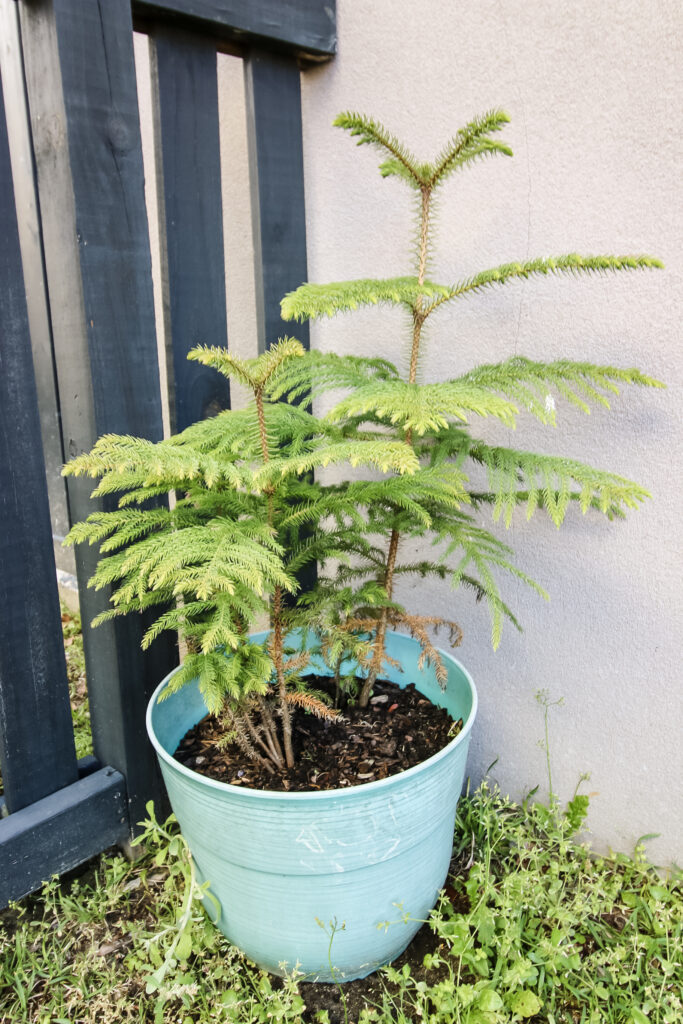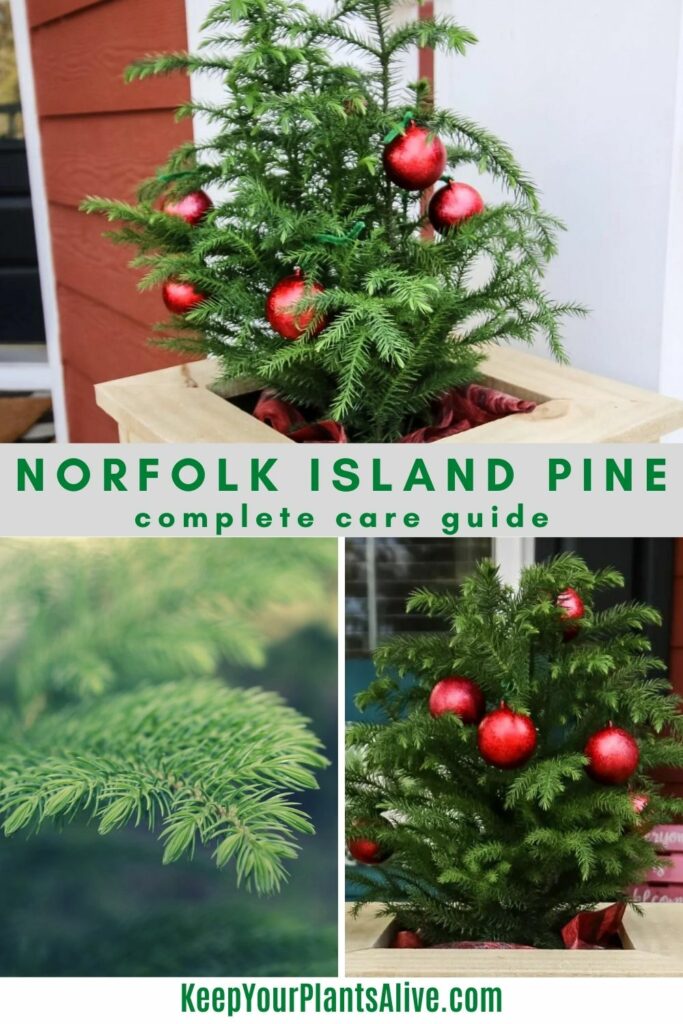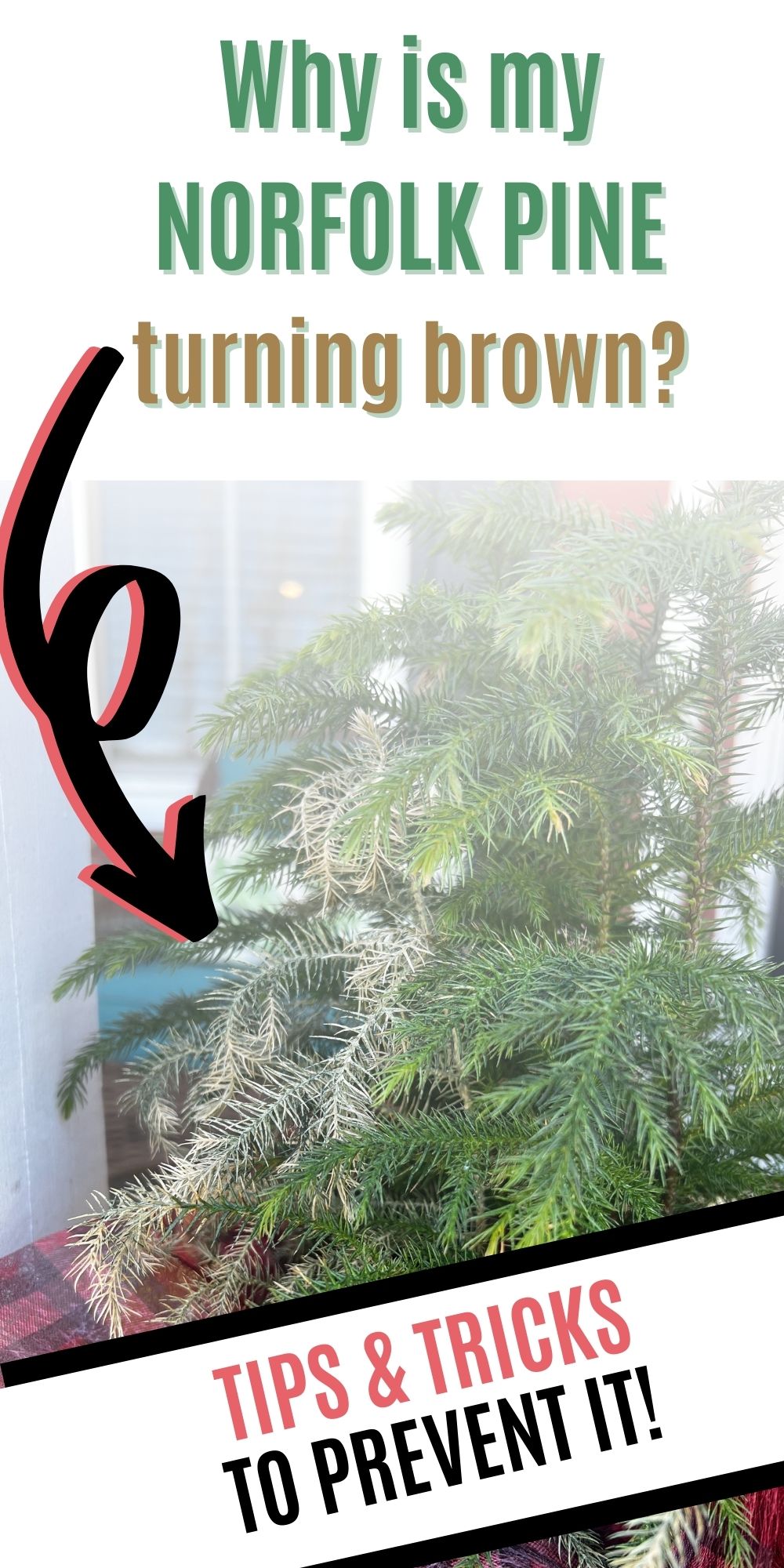Does your Norfolk Pine tree need a boost of growth? Here is how to fertilize a Norfolk Pine - with the best fertilizer to use and when and how often to fertilize!
If you have a Norfolk Pine houseplant, but aren't thrilled with it's growth, it might be time to fertilize.
When these plants grow in the wild, they get quite tall and large and even more beautiful. However, when you want to make it a houseplant, you need to make slight adjustments.
Today, we will be talking about nurturing these green beauties, specifically focusing on how and why to feed them and which Norfolk Pine fertilizer to use.

A little info about Norfolk Island Pines
In nature, Norfolk Pines are quite magnificent trees. They are native to the Pacific islands, and gardeners around the world that live in warmer climates can grow them outside.
However, some people tend to nurture them as houseplants too. If you know how to maintain their proper light and water requirements, they will thrive.
Of course, placing them in a large pot or container is a great help to encouraging larger growth, even indoors.
When you take care of your Norfolk Pine, it is important to know how to fertilize them properly.
If you want to maintain the bushy appearance of this tree and keep it soft yet strong, then read carefully.
We have created a specific guideline for using fertilizer on these plants.

How to fertilize a Norfolk Pine tree
The process of fertilizing has never been easier than it is today. Since gardening has become increasingly popular among plant owners, there are a variety of fertilizers you can use for any plant. Some of them are stronger, and others are even DIY-based.
But either way, all of them are effective.
When it comes to Norfolk Pine fertilizer, however, the first thing you need to keep in mind is that these trees don’t require a lot of it. If you consider yourself one of the lucky few who grow these trees outside, you should know that they practically care for themselves.
On the other hand, if you’re growing your tree in a container, then you should consider regular fertilization.
This is a good way for them to feed and get all of their necessary nutrients.
One of the most interesting things about Norfolk Pine trees is that they have a growing schedule, and it’s quite regular. They grow in the summer months, and they are dormant in the winter months.
When it comes to keeping your Norfolk Pine tree in a container, it doesn’t matter if it’s outside or inside. What you need to remember, though, is to lay off the feeding when winter comes.
Since they are dormant during this time, feeding them excessively can have a rather adverse effect, and you’re also risking ruining the plant’s natural environment.
In addition, you may want to reduce your watering, too. Plants generally need less water + nutrients during dormant months.
Of course, knowing how to fertilize a Norfolk Pine tree means knowing what type of soil it thrives in. Let’s take a look at the overall nurturing factors throughout the year for this type of tree.

Nurturing Norfolk Pine
As we already mentioned, these types of trees have a resting and a growing period. That said, focusing on giving them the right nutrients in specific seasons is important.
You can use Norfolk Pine fertilizer during the summer months, as well as spring, since this is the time they need it most.
In contrast, as we previously discovered, the winter months are scheduled for the so-called “sleep” of the plant, so even if you fertilize, it won’t make much of a difference.
Additionally, you should look into adding fertilizer and water during fall as well, but not too much. In such cases, when the plant is fully grown, you might not need fertilizer, only water.
Before watering and fertilizing your plant, make sure to check the soil. It should be slightly dry - if so, add water thoroughly.
If your Norfolk Pine tree is placed in a container, wait until all the water runs out of the drainage holes and empty the saucer. Water pooling in the saucer can mean that the soil is too soggy and can lead to root rot!
The plant should never sit fully drenched in water, as it can lead to root rot.
Additionally, Norfolk Pines love their fair share of light. If you keep this pine tree inside, place it near a window that provides partial coverage.

When to fertilize a Norfolk Pine
Look for the green signs whenever you want to fertilize a Norfolk Pine tree. In spring, the bright green growth that you can notice on the tips of the branches means that the resting period is over.
The plant is getting ready for the summer months and is ready to grow.
As the growths pop out, they signify an ideal time to add your Norfolk Pine fertilizer.
What is the best fertilizer for Norfolk Pine trees?
It is very easy to give proper nutrients to the Norfolk Pine tree.
You should choose a fertilizer soluble in water – you can apply it occasionally when watering the tree.
Azalea fertilizer works great for this type of tree, but you can also pick up a pine tree fertilizer or use compost!

How much Norfolk Pine fertilizer do you need?
The first thing to know is never to overdo it, as the key is balance. Too much fertilizer can absolutely kill your plant.
Every fertilizer has different serving suggestions and it is imperative that you follow them. It is always better to under fertilize than to over fertilize!
Add some of it into the potting soil according to the instructions on the label, however, be mindful of the size of the tree and the container as well. Larger plants (and pots) typically take more fertilizer compared to smaller ones.
For optimal results, you should add fertilizer on the top of the soil every six weeks during the active growing period. Gently scratch the fertilizer into the soil, then finish with some water.
Ultimately, Norfolk Pines are a low-maintenance plant that you can enjoy it for many years.
We hope this Norfolk Pine fertilizer guide has assisted you – follow our tips, and you’ll be graced with a thriving plant!
Thanks for reading!


Hey there, I'm Morgan, a houseplant enthusiast from sunny Charleston, South Carolina. Growing up surrounded by my mom's lush orchids and African violets, I discovered the magic of bringing nature indoors. Thanks to the pandemic, I delved deeper into houseplants, discovering their power to uplift moods and transform spaces. I'm here to spill all my secrets, helping you pick the perfect houseplant - and make it happy. Let's keep your plants alive, together! 😊


